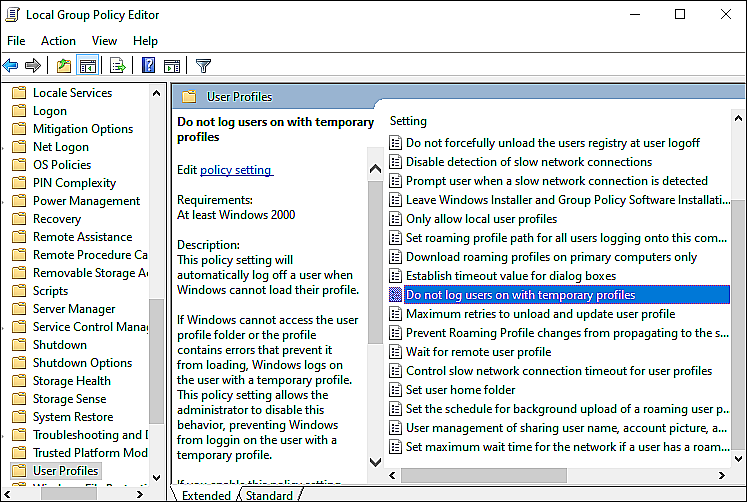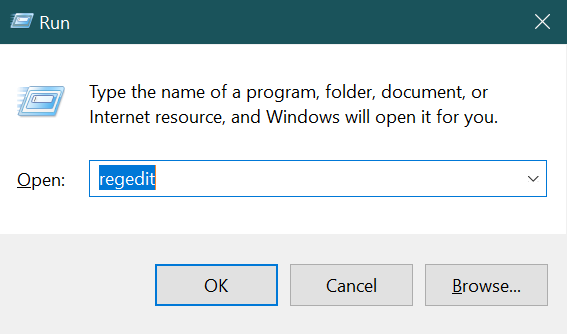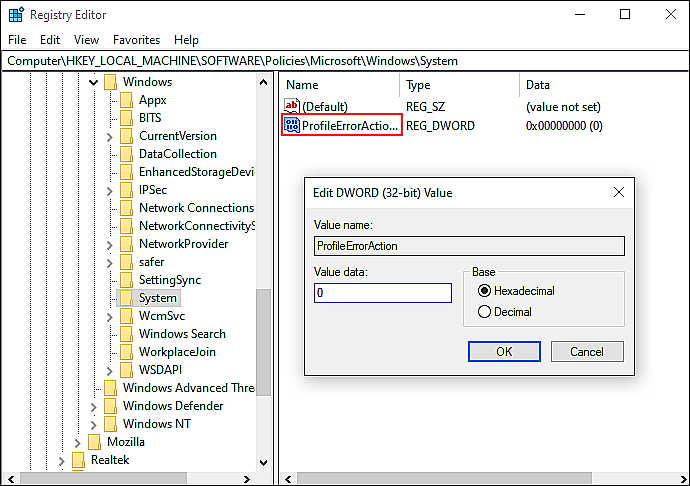Wondering how to enable or disable log on users with temporary profiles in Windows?
When a new user signs into their new account in Windows, the operating system automatically creates a user profile for that account.
Each user profile stores the user’s configuration information in a secure place so that their information is readily accessible each time they log in. The configuration information includes items on the Windows desktop, connections to printers and networks, and personal program groups and items within them.
When Windows cannot access the user’s profile folder or the profile contains errors that prevent it from loading, Windows will sign the user in with a temporary profile.
In this guide, we will show you how to enable or disable the temporary profile feature for users in Windows. The methods mentioned in this guide work for Windows 7, Windows 8, and Windows 10.
Let’s get into it!
1. Use Group Policy Editor.
The first method to enable/disable log on users with temporary Windows profiles is modifying the Group policies.
Windows 10 Pro, Enterprise, and Education editions include a feature created for advanced users called the Local Group Policy Editor (GPE). GPE allows the users to manage the working environment of their operating system more effectively.
The Group Policy Editor is stored in the form of policies, and by modifying the relevant policies, we can make the desired changes.
Here is what you need to do:
- Open a Run dialogue box by pressing Windows + R keys simultaneously on your keyboard.
- Inside the text field of the dialogue box, type ‘gpedit.msc’ and hit Enter. This will launch Group Policy Editor on your PC.

- Once you are inside the Group Policy Editor, navigate to the location mentioned below.
Computer Configuration\Administrative Templates\System\User Profiles
- Locate and double-click on Do not log users on with temporary profiles in the right pane.

- Click on Enabled if you want to enable the feature and Disabled if you wish to disable it.
- Hit Apply to save the changes and check if the desired changes have been made. If not, then continue with the 7th step.
- Type cmd in the search bar and click on Run as administrator. This will launch elevated Command Prompt on your PC.
- In the Command Prompt window, type the command mentioned below and hit Enter to execute it. This will force an update for the policy that you just configured.
gpupdate /force
Hopefully, this will make the desired changes in Windows 10 without any issues.
2. Try Using CleanMyPC.
If you cannot execute the desired operation after trying both methods in this guide, then your system may be infected with a corruption error.
If this is the case, you should perform a deep cleaning of your PC first to get rid of bugs and corruption errors and then proceed with the methods in this guide. We strongly recommend using an efficient PC cleaner in such cases, as manual cleaning can be very time and energy-consuming.
In case you’ve never used a PC cleaner before, we recommend CleanMyPC.

Using CleanMyPC, you can efficiently resolve all your PC problems. There are various tools included, such as a Multi-Uninstaller, a Speed Booster, and a Registry Cleaner, which will fix most system-related issues and enhance your computer’s performance.
If this looks like something your PC desperately needs, install CleanMyPC now and get your PC up and running like new!
3. Use Windows Registry.
You can also use the Registry Editor to make the desired changes in Windows 10 if you cannot use the Group Policy Editor.
The Registry Editor stores the low-level settings for Windows programs and operations. As Windows performs day-to-day tasks, it refers to the information stored in the Registry Editor.
Unlike the Group Policy Editor, information stored in Windows Registry is in the form of Registry keys. In this method, we will be modifying the keys related to the temporary profiles to enable/disable the feature.
Here is what you need to do:
- Press Windows + R keys simultaneously on your keyboard to open a Run dialogue box.
- Inside the text field of the dialogue box, type ‘regedit’ and hit Enter. This will launch Windows Registry on your PC.

- Once you are inside Windows Registry, navigate to the location mentioned below.
HKEY_LOCAL_MACHINE\SOFTWARE\Policies\Microsoft\Windows\System
- If you cannot locate the System key, right-click on the Windows key and select the New > Key option.
- Rename this newly created System and double-click on it.
- Now right-click anywhere in the right pane and select the New > DWORD (32-bit) Value option.
- Rename this value as ProfileErrorAction and double-click on it.

- If you want to disable the feature, type 1 under Value data and hit Enter. If you’re going to enable it, type 0 under Value data or simply delete the key.
This should enable/disable the temporary profile feature without any issues.
This brings us to the end of our article on enabling/disabling log on users with temporary profiles in Windows. We hope that one of the methods mentioned in this guide did the trick for you. If you have questions regarding the methods discussed above, please let us know in the comment section below.
If this guide helped you, please share it. 🙂





